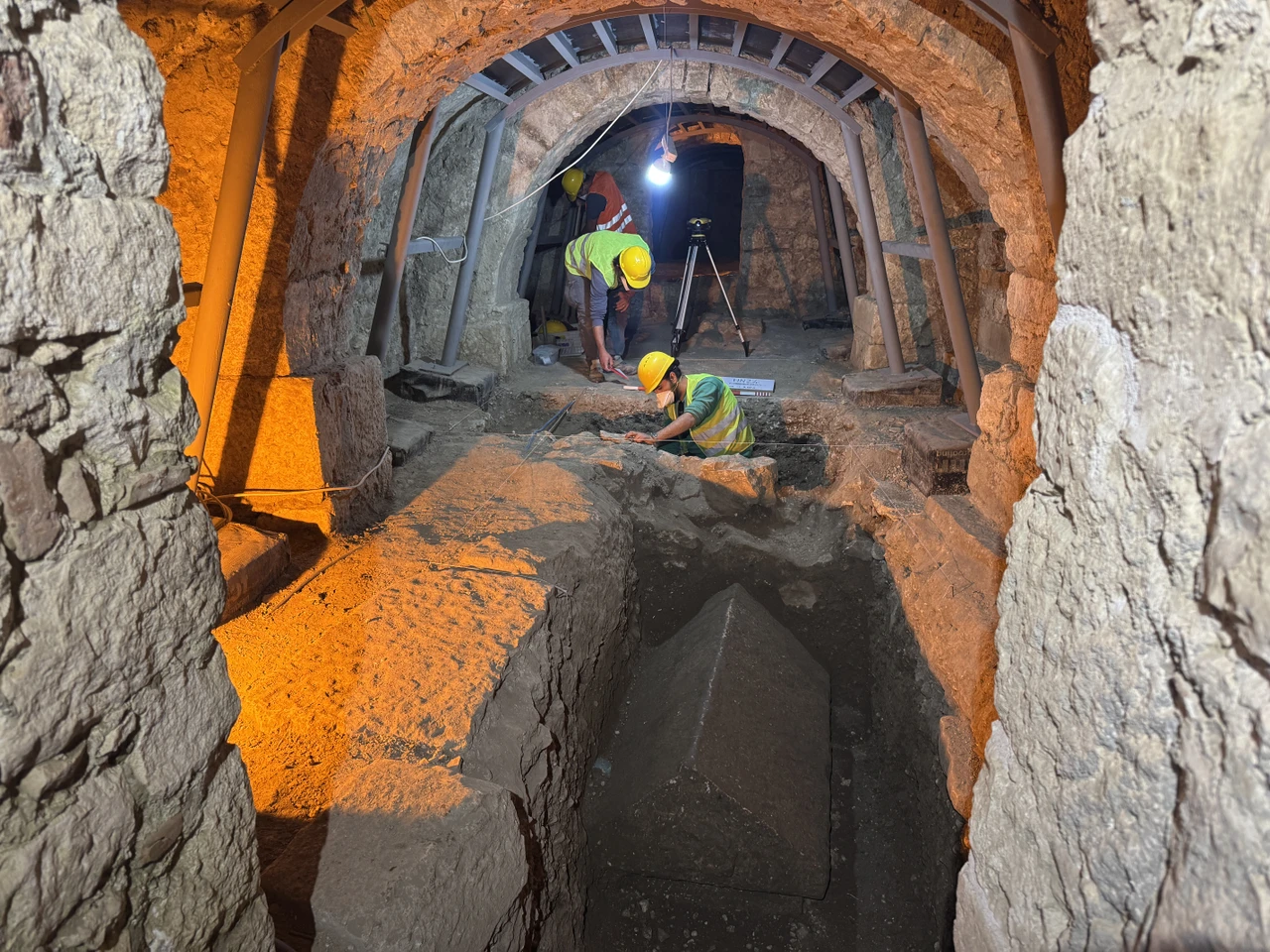Archaeologists working at St. Nicholas Church in Demre, Antalya, Turkey, have uncovered a limestone sarcophagus that may contain the remains of Saint Nicholas of Myra — the 4th-century bishop who inspired the legend of Santa Claus.
This exciting discovery, made beneath the historic church, has sparked global interest. Carbon dating is now underway to determine whether this could truly be the final resting place of the saint.
A Breakthrough in the Search for St. Nicholas’ Tomb
Assoc. Professor Ebru Findik takes part in the excavation efforts at St. Nicholas Church in Demre, Antalya, Türkiye, Dec. 6, 2024. (AA Photo)
Excavation work at St. Nicholas Church has been ongoing since 1989, but this recent discovery is considered one of the most significant yet. The limestone sarcophagus was found buried six meters deep, beneath a two-story annex of the church, hidden under centuries of history.
Leading the excavation, Associate Professor Ebru Fatma Findik from Hatay Mustafa Kemal University confirmed that the sarcophagus is about two meters long and features a pitched roof-style lid typical of the era’s regional designs.
Before uncovering the sarcophagus, archaeologists found fragments of clay lamps and animal bones, which strongly suggest this was a burial site.
Excavation work on the sarcophagus found at St. Nicholas Church, Demre, Antalya, Türkiye, December 6, 2024. (AA Photo)
Inscriptions Could Reveal Ancient Secrets
One of the key objectives now is to search for inscriptions that could identify the person buried within.
“Our biggest hope is to find an inscription,” said Findik. “This would help us pinpoint the exact time period and possibly confirm the identity of the individual buried here.”
So far, only a small portion of the burial chamber has been exposed, but further excavation is planned for the coming months.
Carbon Testing to Confirm the Identity
Excavation work on the sarcophagus found at St. Nicholas Church, Demre, Antalya, Türkiye, December 6, 2024. (AA Photo)
Birol Incecikoz, Director General of Cultural Assets and Museums in Turkey, told Hurriyet that scientific analysis will be essential to verify whether the sarcophagus belongs to Saint Nicholas.
“The location is promising and aligns with historical accounts,” Incecikoz explained. “We are not yet ready to declare this as the tomb of Saint Nicholas, but we are getting closer. Carbon testing and other scientific methods are being used to authenticate it.”
While the sarcophagus lid is consistent with the era, only thorough examination will confirm whether the bones inside belong to the saint who lived during the Roman Empire.
The Saint Nicholas Church in Demre, Antalya, Türkiye, August 7, 2015. (Photo via Wikimedia)
Why St. Nicholas Matters: Faith, Folklore, and History
Saint Nicholas, born in the 3rd century A.D. in Patara (part of the Lycian civilization), became the Bishop of Myra (modern-day Demre), where he gained a reputation for secret acts of generosity, particularly helping poor girls with dowries. These acts inspired the Santa Claus legend.
Excavation work on the sarcophagus found at St. Nicholas Church, Demre, Antalya, Türkiye, December 6, 2024. (AA Photo)
Nicholas passed away in 342 A.D., reportedly while imprisoned for spreading Christianity. In 1087, Italian merchants took his bones to Bari, Italy, during the Crusades. However, some sources suggest parts of his remains may still lie in Turkey today, with a fragment preserved in the Antalya Museum.
From Anatolia to the North Pole
Saint Nicholas’ transformation into Santa Claus spanned centuries and continents. In medieval Europe, his legend blended with local folklore. The Dutch referred to him as "Sint Nikolas," which eventually evolved into "Santa Claus" after Dutch settlers brought the tradition to America.
The familiar red-suited, bearded Santa emerged in the 19th century, especially through illustrations by Thomas Nast and Coca-Cola advertisements by Haddon Sundblom in the 1920s. The concept of reindeer and sleigh may even trace back to Norse myths about Odin.
UNESCO-listed Church and a Major Faith Tourism Site
A stunning drone view of St. Nicholas Church in Demre, Antalya, Türkiye. (Adobe Stock Photo)
St. Nicholas Church in Demre was added to UNESCO’s Tentative Heritage List in 2000 and remains one of Turkey’s most visited spiritual landmarks, attracting thousands of tourists annually, particularly from Russia.
As researchers await the results of carbon dating and continue their excavations, the world watches closely, hoping for confirmation of what could be the true tomb of the man behind Santa Claus.













